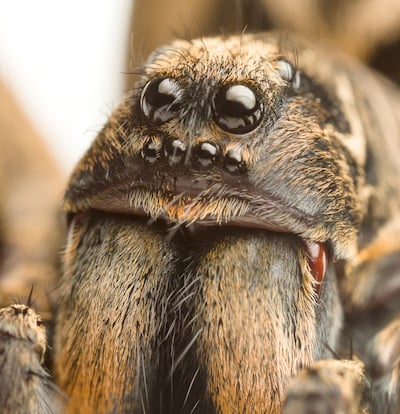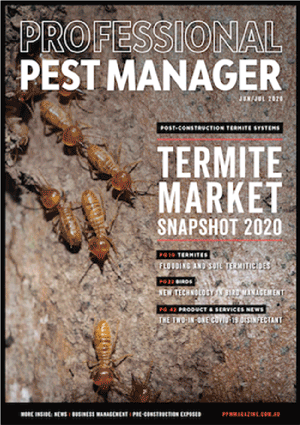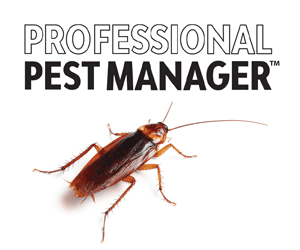Despite their fearsome appearance, wolf spiders are not dangerous. However, they will certainly give cause for alarm for many residential customers, so understanding their biology and behaviour is necessary.
Wolf spiders (family Lycosidae) are found throughout Australia. There are approximately 2400 wolf spider species globally, with around 130 of these found in Australia. They are outdoor spiders, only wandering inside ‘by accident’ and they don’t have a particularly painful bite. So really, they shouldn’t be considered a pest.
However, as they are one of the most common spiders in Australia – and for arachnophobes, of course, any spider is a cause for concern – it is important for pest managers to know how to identify wolf spiders and understand their habits. Their management is more about customer education than treatment programs.
What do wolf spiders look like?
Wolf spiders are ground-living, fast moving, hunting spiders. They are one of the easier spiders to identify – they all have eight eyes in a 4-2-2 arrangement, with four smaller eyes at the front just above the jaws and four larger eyes set above in a square arrangement. This gives them their excellent eyesight to support their hunting activities. The various wolf spider species vary in size from 1-8 cm (body length) and are a range of colours, although typically they are brown/grey with patterned bodies, to provide them with camouflage in the leaf litter where they live.

Where do wolf spiders live?
Wolf spiders do not build webs, although some will build burrows (main picture, above) in which they hide during the day (they are night hunters). These burrows can be up to 25 cm deep, with some species also building a trapdoor to close the opening, which is why they sometimes get confused with trapdoor spiders.
Around buildings they will typically live in the leaf litter and in lawns, where they hunt invertebrates.
Are wolf spiders dangerous?
Wolf spiders are hunting spiders, so their venom is effective at killing their prey. Most spiders target invertebrates, although some species will tackle vertebrates. Information from the Australian Museum states that two species of Australian wolf spider are known to be predators of cane toads, with Allocosa obscuroides having been recorded as biting and killing a large toad within one hour!
However, wolf spiders are not considered particularly aggressive or dangerous to humans. They have a generally mild bite with localised pain/itchiness. Occasionally a more severe reaction may occur that could include prolonged pain, dizziness and nausea. The standard spider bite first aid should be applied: clean the bite site and apply an ice pack to the bite area, capture the spider or take a photo of the spider for identification, and seek medical attention if an allergic reaction occurs. Most bites tend to occur by accident when gardening.
Wolf spider eggs and spiderlings
One of the unique characteristics of wolf spiders are their mating habits and care of their young. Male spiders seek out female burrows by following scent markings made by the female. After mating, the female spider lays about 100 eggs which are incorporated into an egg sac that she attaches to her spinnerets. When the eggs hatch, the spiderlings hitch a ride on the back of the female until they are ready to disperse.

How should you manage wolf spiders?
Wolf spiders are part of a healthy environment, so a wide-area treatment to reduce their numbers is neither recommended or practically possible. Make sure customers are aware that it is perfectly normal to find wolf spiders in gardens and this is where they normally remain.
For customers with a heightened concern about spiders, keeping the perimeter of the house clear (i.e. not having garden beds next to the house) will help. Ensuring all door and window screens are well fitted will reduce the chances of a wolf spider wandering in. An external perimeter spray treatment as part of a general pest treatment will have both a direct and indirect effect; spiders walking across the treated area are likely to pick up a lethal dose of insecticide and the treatment will eliminate many of the wolf spiders’ prey, making the area less attractive to the spiders.
Read more about spiders.


